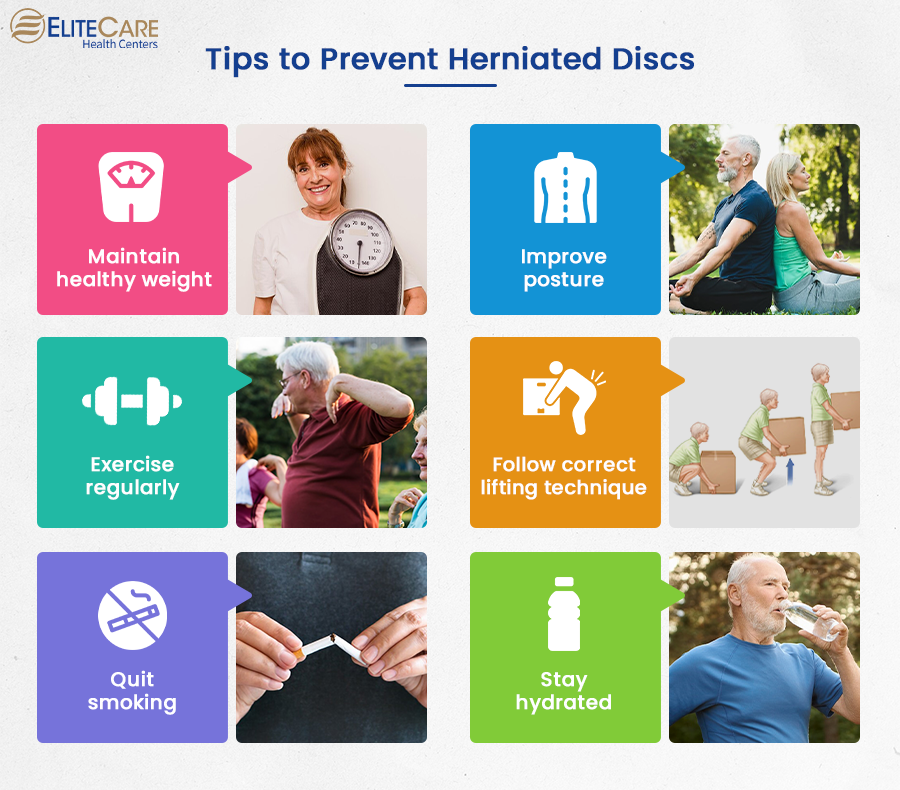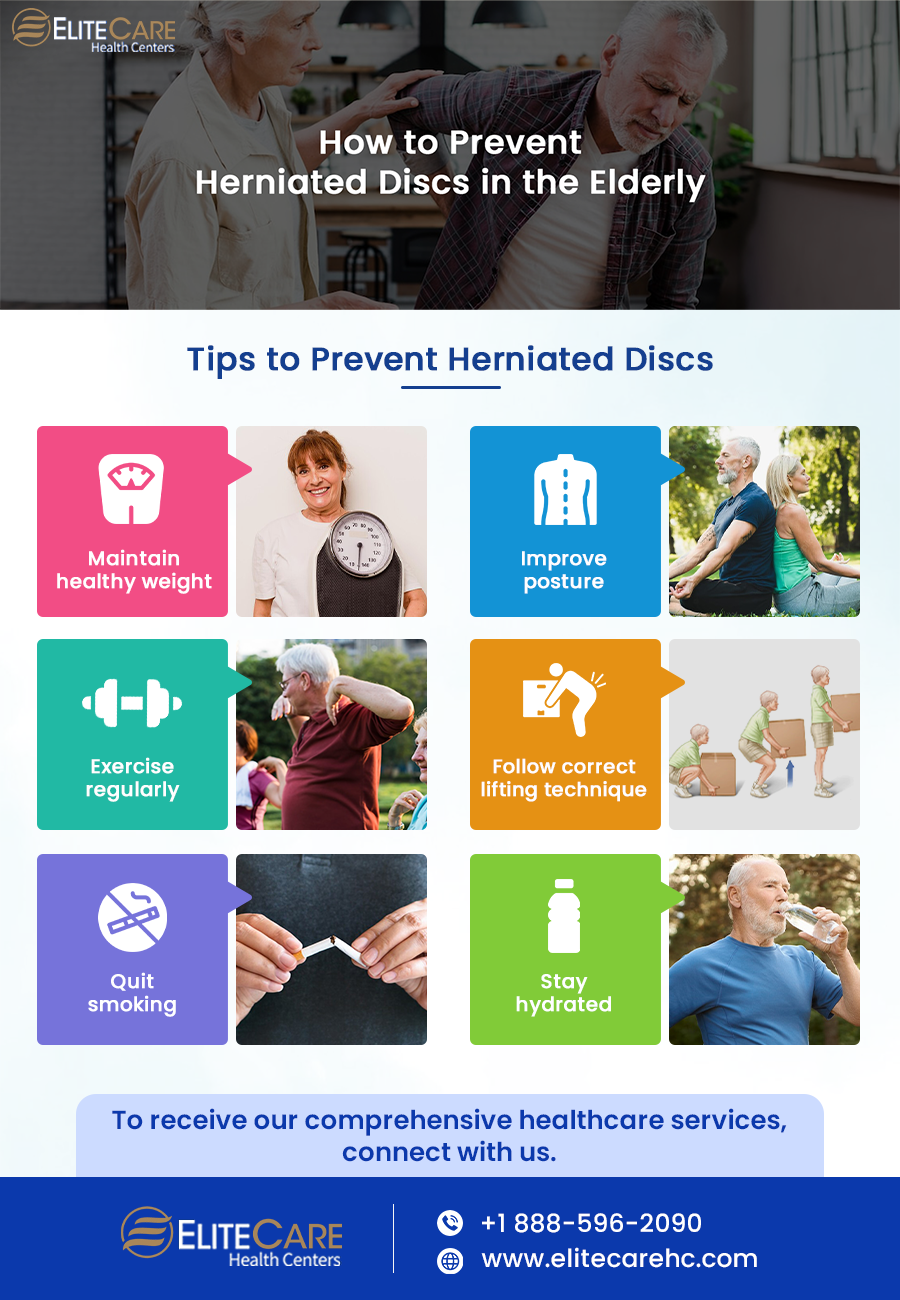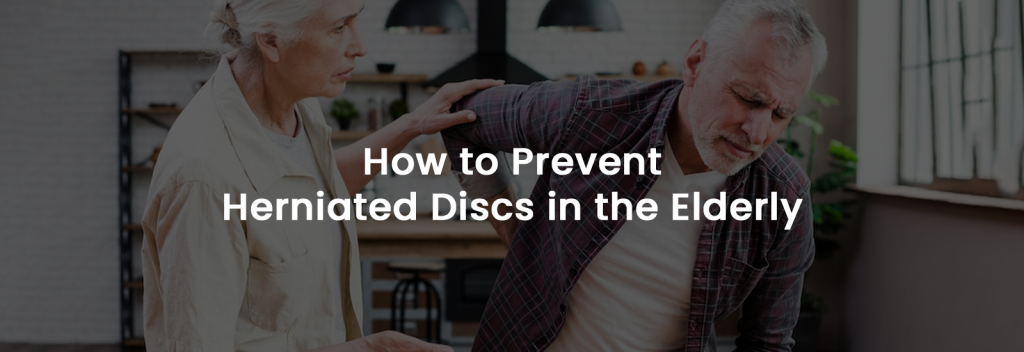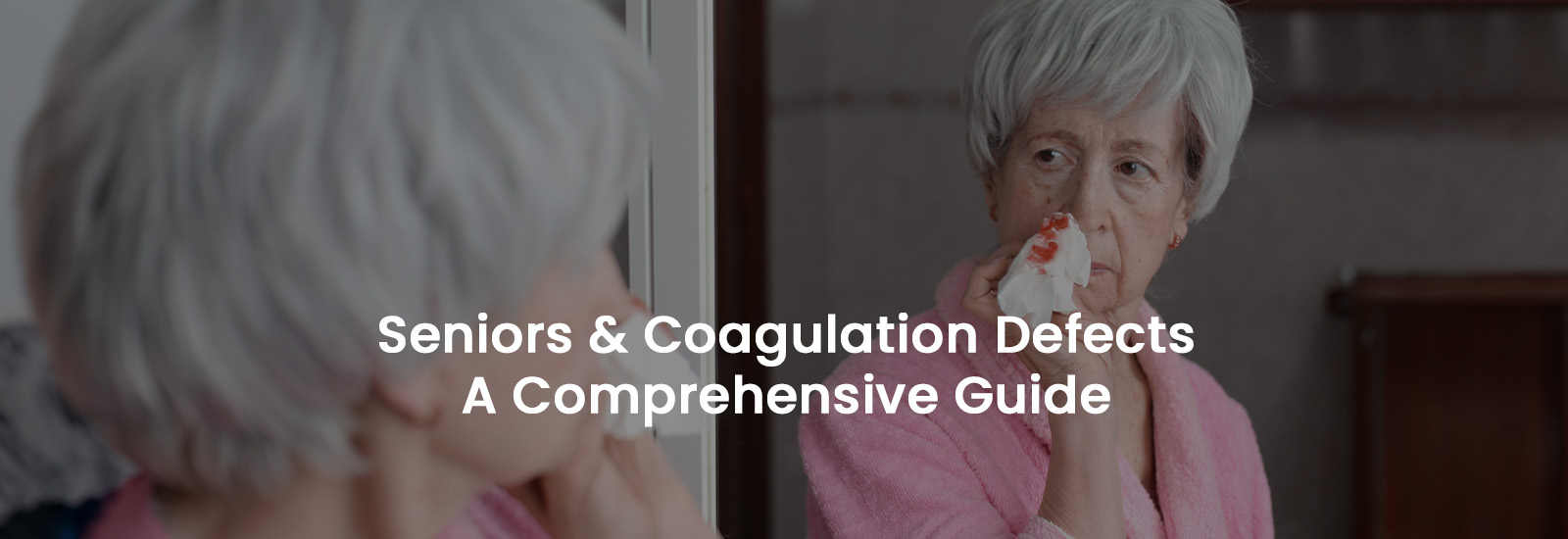
Aches and pains are the inevitable consequences of getting older. A herniated disc, more commonly known as a slipped disc, is one of the leading causes of back pain in older adults. These painful conditions can affect mobility and the quality of life for seniors. However, there are a few proactive steps one can take to prevent herniated discs effectively.
In this blog post, we will share detailed insights and practical strategies to prevent a herniated disc or slipped disc in seniors. Read on for more.
What is a Herniated Disk?
The cushioning material protecting the series of bones (vertebrae) in the spinal columns is known as a disc. The discs work as a shield for the bones and protect them during daily activities like walking, lifting, and twisting.
Each of these discs has two parts. The condition of a herniated disc occurs when the soft, gelatinous inner portion pushes through the outer ring of the discs, causing pain and discomfort. This is known as a herniated disc issue.
The symptoms of herniated discs include:
- Numbness
- Arm and leg pain
- Severe pain after standing or sitting for too long
- Extreme muscle weakness
- Tingling sensations in the affected area
One of the major reasons behind herniated discs is age. Nevertheless, it can also occur when lifting heavy objects, or performing intense physical activities like running or jumping, or after an accident.
Why Do Older People Suffer from Herniated Discs?
Although several factors are responsible for herniated discs, the most common reason is aging. As the body ages, the disc loses moisture as well as its integrity. Therefore, causing it to bulge or rupture.
In addition, the inflammation rate is much higher in an aging body than in a younger one. Hence, the disc becomes unable to repair itself in case older adults fall or suffer from any injury.
With age, the spine structure starts breaking down, and the muscle mass also lessens naturally with age. All these factors contribute to the increased risk of herniated discs among the elderly.
Tips to Prevent Herniated Discs

Herniated discs are not entirely preventable, but there are a few ways to minimize the risk and severity of this condition. Here are a few tips to reduce the risk of herniated discs in the elderly.
1. Maintain a healthy weight
The spinal column consists of bones, cartilage, discs, nerves, and other tissues supporting body weight. Excessive weight in the abdominal region puts undue stress on the lumbar spine and results in long-term damage to the discs.
Besides, the back and abdominal muscles act as the core muscles keeps the spine aligned to reduce pressure. Weight gain results in weakened supporting muscles since they need to work harder to provide adequate spinal support. Therefore, adding more stress on the intervertebral discs.
2. Improve your posture
Maintaining proper posture and an aligned spine is the key to reducing the risk of slipped discs. Whether sitting, standing, walking, or running, your posture plays a crucial role in reducing the pressure on your spinal discs. Poor posture puts extra pressure on the neck as well as the back, making the discs more prone to bulge or rupture.
Here are a few ways in which you can correct your posture and protect your spine.
- Sit with the back flat against a chair. Also, keep your shoulders tall with your head level over the spine.
- While sitting at a desk and working for a long time, sit with knees slightly above the hips.
- Avoid slouching for an extended period. It can overstretch the spinal ligaments and increases the possibility of straining the discs.
- While walking, stay upright and pull the stomach slightly towards the body. Keep a comfortable pace to maintain the compression within the discs and vertebrae of the spine.
3. Exercise regularly
The purpose of exercise is to support the back muscles and strengthen the entire body and the core muscles. Gentle activities and exercises strengthen the muscles that support the spine to reduce pressure on the spinal column. Aerobic exercise is particularly effective at keeping tissues healthy. Yoga, walking, and swimming are some of the most common yet effective exercises to prevent herniated discs in the elderly.
Strength training exercises and high-impact activities such as running and jogging are not recommended for those already experiencing degenerative disc disease. While exercising, if there are any cramps or pain, don’t force any further movements. If possible, work out under the supervision of a certified trainer.
4. Follow the correct lifting techniques
While lifting heavy objects, most of us tend to lift them by bending the waist. Thus, the back is used to lift the object – when it should be the powerful leg muscles that should be used. As a result, it creates severe stress on the spine as well as the discs.
Older adults should avoid lifting overly heavy objects and ask for assistance whenever it is possible. When it is absolutely necessary for them to lift heavy objects, they should follow the right technique of lifting to prevent any disc injury. The correct way to lift heavy objects is to bend from the knees – instead of the waist. Make sure to keep the back straight and aligned while picking up the object and when standing up. This technique puts weight on the leg muscles and prevents any further back injury.
5. Quit smoking and stay hydrated
Cigarettes contain nicotine, an addictive substance present in tobacco plants. Nicotine prevents healthy tissues from absorbing nutrients and oxygen. Without the right amount of nutrients, a disc tends to dry out and loses its flexibility over time. Therefore, it imposes a significantly higher risk of developing spinal disc degeneration and osteoporosis. Besides, heavy coughing bouts caused by excessive smoking can also increase pressure on the spine.
In addition, the spine squeezes out the water within the discs during any physical activity. Without adequate hydration, the discs remain compressed and lack enough fluid. If the disc does not have enough water, it can result in a lack of mobility and severe pain.
Exercises You Should Avoid if You Have Herniated & Bulging Discs
While regular exercise can reduce the risk, individuals need to be mindful of certain exercises once they are diagnosed with a herniated disc. The following exercises should be avoided as they can misalign the spine or place excessive pressure on it and lead to further injury.
- Sit-ups
- Squats
- Cycling
- Standing hamstring stretch
- Deadlifts
- High impact aerobic activity
- Leg press
- Straight leg raises
What are the Treatment Options for a Herniated Disc?
Although the pain caused by herniated disc issues generally starts improving on its own within a few weeks, there are some treatment options as well. These treatments are prescribed by physicians after detailed evaluation and done under their supervision.
The most effective back injury treatment is getting adequate rest. Taking a few days of rest provides relief from swelling and helps in the healing process as well. If the pain persists, avoid exercising to prevent any further injuries. Pain medications like ibuprofen and naproxen also help reduce pain and swelling. But older adults should never continue these medications for more than ten days and always consult a primary care physician.
Once the swelling is under control, stretching exercises and aerobic exercises help improve overall flexibility.Physiotherapists can also recommend massage, ice and heat therapy, and electrical muscle stimulation, depending on the patient’s condition. If the problem is severe, doctors may also opt for surgical procedures.
Can a Herniated Disk Heal on Its Own ?
Conclusion
Although it is rare, an elderly person can have a herniated disk with mild symptoms. Hence, the wisest option is to consult a physician for any pain or discomfort. Never try to start a self-healing exercise program without consulting a specialist to avoid further injury. A proper medical evaluation is always required to detect the herniated disc and guide the patient through the right treatment path.
If you have a senior family member suffering from pain or discomfort, contact EliteCare Health Centers and consult a primary care physician. We are a medical clinic in Florida providing exceptional primary care and senior care services. Visit our website now to schedule an appointment with our board-certified physicians!
- Tags:back injury treatmentbenefits of primary carehealth and wellness servicesherniated discherniated disc lower back treatmentmedical clinicprimary care center sebastianprimary care clinicprimary care physicianprimary servicessenior care servicessleep disorderssleep disorders treatmentslipped disc






